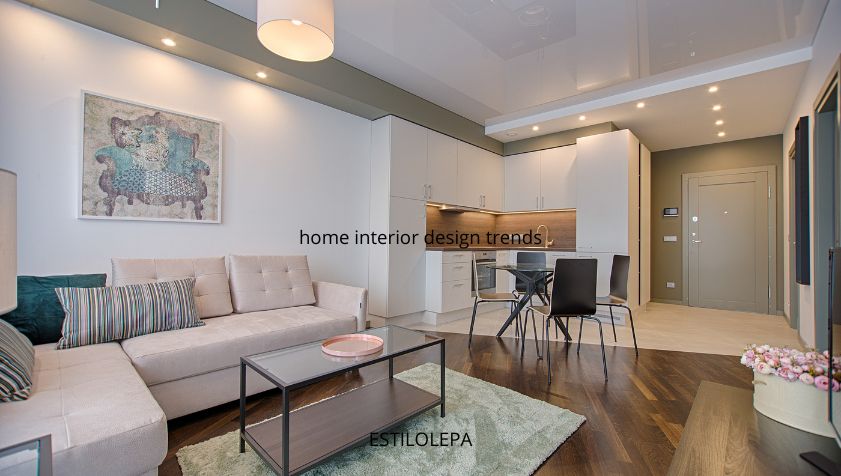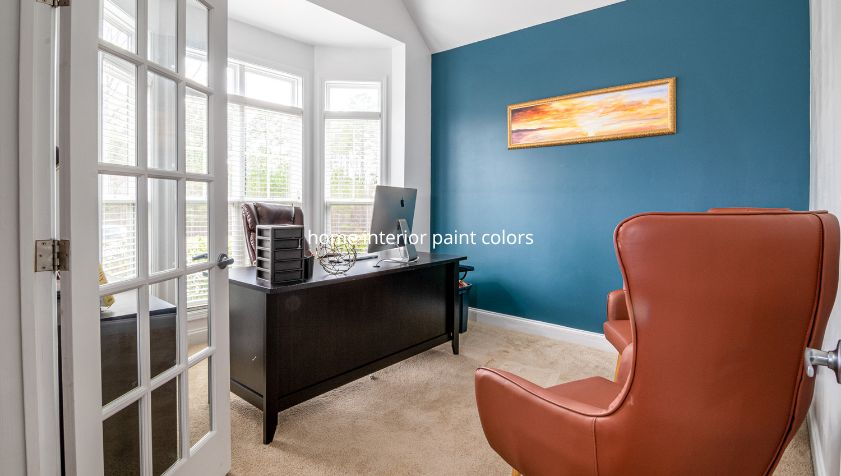Mediterranean Home Interior Design: A Complete, Easy-to-Understand Guide
Mediterranean home interior design is a timeless and beautiful style inspired by countries surrounding the Mediterranean Sea. When people talk about Mediterranean home interior design, they often imagine warm colors, natural textures, rustic charm, and a relaxing, sun-filled atmosphere. Mediterranean home interior design focuses on comfort, simplicity, elegance, and the use of natural materials to create a cozy yet sophisticated home environment. Many homeowners love Mediterranean home interior design because it blends outdoor and indoor living while offering a unique combination of old-world charm and modern comfort. In this article, we will fully explore Mediterranean home interior design in an easy and practical way.
What Is Mediterranean Home Interior Design?
Mediterranean design comes from coastal regions such as Spain, Greece, Italy, Turkey, and Morocco. Each region has its own influence, but all share similar characteristics—warm tones, textured surfaces, hand-crafted materials, and an organic feel.
This design style became especially popular in modern homes because it creates a sense of relaxation and simplicity. Mediterranean homes often feel inviting, peaceful, and natural, making them perfect for families, holiday homes, and people who want a warm, bright living space.
Key Characteristics of Mediterranean Interior Style
Mediterranean home interior design has several signature elements that make it unique:
-
Warm & earthy colors such as terracotta, beige, sun-baked browns, olive green, and deep ocean blue
-
Natural materials like wood, stone, clay, and wrought iron
-
Textured walls including plaster, stucco, or limewash finishes
-
Arched doorways & windows for a classic architectural character
-
Open, airy floor plans to maximize light and comfort
-
Outdoor-inspired decor with plants, ceramics, and woven materials
-
Handcrafted details including tiles, pottery, and mosaics
These features create interiors that look elegant and cozy but also remain functional and practical.
Essential Color Palette for Mediterranean Interiors
Color is one of the most important aspects of Mediterranean home interior design. This style takes inspiration from natural landscapes—sun, sea, sand, earth, and vegetation.
1. Earthy Neutrals
Colors like cream, sand, beige, and warm white form the base of the Mediterranean look. These colors help brighten spaces and create a soothing backdrop.
2. Ocean-Inspired Blues
Mediterranean homes commonly feature shades of turquoise, deep blue, and soft aqua to reflect the surrounding sea.
3. Terracotta & Warm Browns
Terracotta floors, clay pots, and rustic wooden furniture bring depth and warmth to rooms.
4. Olive Greens & Natural Greens
Used sparingly, green tones add freshness and mimic the plants found in Mediterranean landscapes.
5. Sun-Baked Yellows
Soft yellow or gold accents create a cheerful and warm ambience.
The combination of these colors helps form a space that is cozy, natural, and timeless.
Materials Used in Mediterranean Interior Design
The Mediterranean style celebrates nature. This means natural materials play a major role in achieving the desired look.
1. Wood
Typically dark, distressed, or rustic wood is used for beams, doors, cabinets, and furniture.
2. Stone
Stone floors, stone walls, or stone countertops are common, bringing a sense of durability and old-world charm.
3. Clay & Terracotta
Terracotta tiles, clay pottery, and earthenware accessories add warmth and artisanal character.
4. Wrought Iron
Often seen in railings, light fixtures, and furniture details. Wrought iron adds elegance and a handcrafted touch.
5. Textiles
Linen, cotton, and wool are used for comfort. Their natural textures add softness to an otherwise bold architectural style.
Furniture in Mediterranean Home Interiors
Furniture in Mediterranean home interior design tends to be simple yet sturdy, with natural finishes and artistic details.
Common Furniture Features:
-
Solid wood construction
-
Carved details
-
Curves and arches
-
Handcrafted or artisanal designs
-
Natural fabrics such as linen or cotton
Popular Furniture Choices:
-
Wooden dining tables
-
Rustic sideboards
-
Iron-framed beds
-
Woven chairs
-
Large, deep sofas with neutral upholstery
Furniture should feel comfortable, welcoming, and durable.
Architectural Features in Mediterranean Homes
One of the most defining characteristics of Mediterranean home interior design is its architectural elements. These features instantly add personality and authenticity.
1. Arched Doorways and Windows
Arches are iconic in Mediterranean architecture. They soften the lines of a room and add elegance.
2. Exposed Wooden Beams
Ceilings often feature dark or aged wooden beams that contrast beautifully with light-colored walls.
3. Textured Walls
Stucco, plaster, or limewash walls add depth and rustic charm.
4. Decorative Tiles
Hand-painted or mosaic tiles are commonly used in kitchens, bathrooms, staircases, or flooring.
5. Courtyard or Patio Connection
Mediterranean interiors emphasize outdoor living. Many homes include patios, balconies, or garden areas connected directly to the home.
Mediterranean Interior Design for Each Room
To apply Mediterranean home interior design effectively, it helps to understand how to use it room by room.
Mediterranean Living Room
A Mediterranean-style living room should feel bright, airy, and inviting. Key elements include:
-
Neutral-colored walls
-
A large, comfy sofa
-
Wooden coffee table
-
Wrought iron lighting
-
Natural fiber rugs
-
Plants and ceramics
Add colorful cushions, terracotta pots, and art inspired by the sea or nature.
Mediterranean Kitchen
Mediterranean kitchens are cozy yet functional. They often include:
-
Hand-painted ceramic tiles
-
Wooden cabinets
-
Open shelving
-
Stone countertops
-
Large farmhouse-style sinks
The kitchen must feel lived-in and warm, with details like pottery, baskets, and herbs.
Mediterranean Bedroom
This space should be peaceful and romantic. Use:
-
Soft neutral walls
-
Iron or wooden bed frames
-
Linen bedding
-
Warm lighting
-
Wooden wardrobes
Natural materials and light fabrics help create a serene environment.
Mediterranean Bathroom
Mediterranean bathrooms often include:
-
Mosaic tiles
-
Stone or terracotta flooring
-
Copper or brass fixtures
-
Plants and woven baskets
The goal is to create a spa-like atmosphere inspired by coastal calmness.
Outdoor Spaces in Mediterranean Design
Outdoor living is essential. Mediterranean homes often include:
-
Terracotta flooring
-
Stone pathways
-
Wooden pergolas
-
Wrought iron furniture
-
Olive trees, lavender, and potted plants
-
Natural fabrics like linen cushions
These elements create a relaxing and picturesque outdoor area.
Tips for Decorating in Mediterranean Style
Here are practical, easy-to-follow tips:
1. Choose natural, earthy colors
Let your palette reflect nature—warm and soothing tones.
2. Keep it simple
Avoid clutter and keep furniture practical and functional.
3. Add plants
Mediterranean homes include greenery like olive trees, citrus plants, and herbs.
4. Use handcrafted decor
Ceramics, pottery, woven baskets, and handmade textiles enhance authenticity.
5. Incorporate natural light
Allow sunlight to flow into your home. Use large windows or light curtains.
6. Mix rustic and elegant
Mediterranean design blends rough textures with refined details.
Why People Love Mediterranean Interior Design
Mediterranean home interior design is popular because it offers:
-
Warmth and comfort
-
Natural materials
-
Easy maintenance
-
Timeless beauty
-
Relaxed ambience
-
Outdoor-inspired living
It’s both practical and visually appealing—perfect for any lifestyle.
Final Thoughts
Mediterranean home interior design is a wonderful choice if you want a warm, natural, and elegant home. With its mix of earthy colors, rustic textures, and classic architectural details, this style creates a welcoming environment that feels peaceful and timeless. Whether you are decorating a new home or redesigning your current space, Mediterranean design offers endless inspiration. Its combination of simplicity, beauty, and handcrafted elements makes it enjoyable, functional, and aesthetically pleasing for any homeowner.
Sources:
– Architectural Digest
– Home & Design Magazine
– Better Homes & Gardens
– Mediterranean Architecture & Design Journal


